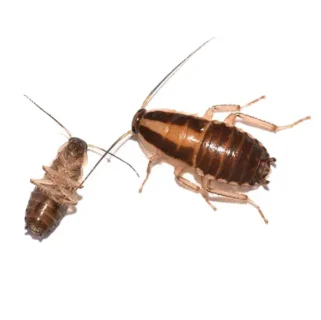Turkestan Cockroaches in Central Arkansas
The Turkestan cockroach was first discovered in 1978 in California, where the species was introduced with household goods belonging to military personnel returning from the Middle East. This cockroach is most often found in the southwestern region of the United States. One element to note is that this invasive cockroach is most frequently spread through being sold and shipped via the Internet. The Turkestan cockroach happens to be a preferred live food for reptile breeders. While they are ordered primarily for those reasons, there has been a widespread invasion of the cockroach throughout the U.S. The species can live in household water meters and sewers, which introduces the risk of contamination.
Turkestan Cockroach Habitat
Outdoors, the preferred habitats of the Turkestan cockroach are in irrigation control valve boxes, water meter boxes, under trash cans, beneath flower pots and planters, and ground debris. Other popular places for the cockroach include underneath concrete and asphalt, in cracks in the pavement, in cavities in the mortar of block walls, in electrical boxes, and weep holes in concrete block walls. The population of the Turkestan cockroach increases during the hot summer months, which often leads to cockroaches looking into homes and buildings to find new sources of food.
Turkestan Cockroach Behaviors, Threats, or Dangers
The Turkestan cockroach presents ecological issues of water contamination and the spread of disease as it may inhabit sewers. When entering a home, this cockroach can bring dangerous bacteria with them, contaminating cooking and eating surfaces. They also have skin that may trigger allergies in some people. Fortunately, this species of cockroach is largely an outdoor insect. Signs of an infestation include locating them in their preferred habitats and finding them at night flying around lights.
If you suspect a Turkestan cockroach infestation, it is recommended that you contact a professional cockroach exterminator.
Need help with Turkestan Cockroach control?
Need Pest Control Service?
Leave your information below and we’ll be in touch with a FREE quote!
"*" indicates required fields
*During normal business hours. After hours calls will be returned the next business day.




